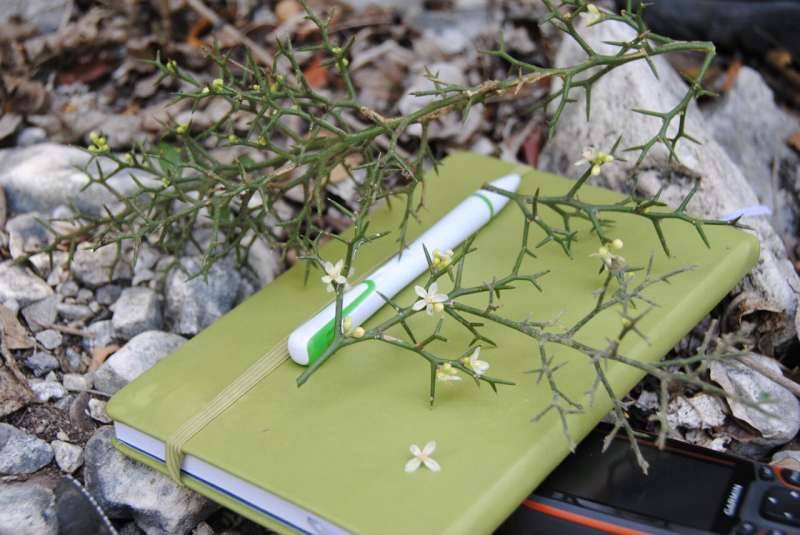
Researchers working in one of the world's most biodiverse and threatened ecosystems have discovered a new plant species, Castela senticosa, and recommend that it be designated as endangered. The plant, which grows as a small bush sheathed in an imposing layer of spines, was discovered during a survey to catalogue the flora of the Dominican Republic's Martn Garca mountain range.
"We were collecting everything we came across with the goal of having a complete species list for the entire mountain range," said lead author Lucas Majure, who works as an assistant curator at the Florida Museum of Natural History and as the curator of the University of Florida Herbarium. The findings were published in Systematic Botany.
The mountains of Hispaniola support large swaths of intact tropical dry forests, which, like the rainforests they border, are globally threatened by the combined effects of deforestation, overharvesting, and climate change.
Despite the fact that they face the same threats, the destruction of a tropical dry forest may result in the extinction of far more species. This is due to the fact that rainforests are frequently found in lowland basins, where conditions such as rainfall, temperature, and soil type are similar over large areas. While there is a high level of species diversity, many rainforest plants can have distributions that span hundreds of miles.
Dry forests can be just as diverse as wet forests, but their plants are more geographically restricted; up to 73% of dry forest plant species in the American tropics are endemic to a specific region. Plants that grow on Caribbean islands that have been separated from continental landmasses for more than 50 million years have an extra layer of isolation built in. As a result, much of the Caribbean flora is unique to the region.
"The overall diversity is incredible," Majure stated. "There are quite a few plant groups that make these forests incredible places to work if you travel across Hispaniola, Cuba, and Jamaica."
During their survey, Majure and other researchers from the United States and the Dominican Republic identified more than 700 plant species along the slopes of the Sierra Martn Garca. But when Majure and Teodoro Clase of the Dominican Republic's National Botanical Garden came across a nondescript shrub halfway up the mountain, they were stumped.
The plant was mostly a tangle of thorns, with few leaves and no flowers or fruits, leaving little in the way of distinguishing characteristics. They carefully collected and pressed one of the branches, which Majure took back to the Florida Museum for further study.
Majure returned from the field and immediately went to work determining the plant's identity. He had a good reference frame for what the species wasn't after documenting the diversity of Caribbean plants for nearly a decade. Finding a positive match, on the other hand, would necessitate some careful investigation. "It sat there for a while and just irritated me to no end because I couldn't figure it out," he explained.
Majure had discovered something completely new. Given that it had only been collected twice, it was most likely something extremely rare. However, in order to officially name a new species, he would need to find another specimen that had both flowers and fruit, allowing him to paint a complete picture of what the plant looked like.
Majure returned to the Dominican Republic with one of his Ph.D. students, Yuley Pieyro, to find the elusive plant. However, when they hiked out into Hispaniola's dry tropical forests in late spring, the climate lived up to its name. "It was incredibly dry," Majure said, "and I thought there was no way we were going to find this thing in flower."
However, after reaching about mid-elevation, Pieyro noticed a flash of red against the backdrop of dull-green vegetation, which turned out to be the exact plant they were looking for. The plant was one of the few things in full bloom that early in the year, with small, white to cream-colored flowers and crimson, scythe-shaped fruit resembling miniature peppers
It's unclear what pollinates the plant's flowers or consumes its fruit, but Majure believes its natural history may provide some insight.
Castela senticosa most likely originated on the island, but it is closely related to species native to western North America's Sonoran Desert. Because the seeds are too large to be dispersed by wind, they must have travelled a long distance. "There are several very rare and endemic species that grow in Hispaniola's dry forests, making them important conservation targets," he said. "Future studies will reveal even more discoveries."
(Source: Florida Museum of Natural History)
















